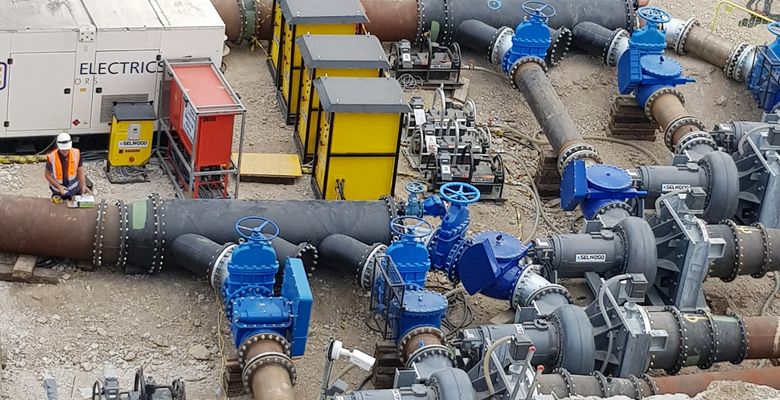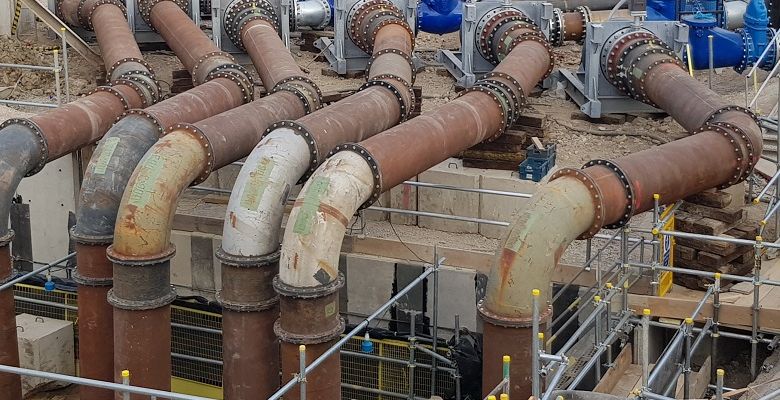The Background
Nine Elms is a major £15bn scheme with more than 42 projects taking place to transform Vauxhall and the Albert Embankment into a new residential, cultural and business quarter. The project is being delivered by the Nine Elms Vauxhall Partnership, created in 2010 to drive forward one of the largest transformation projects in the capital.
JBDS, a long-standing customer of Selwood pump rental solutions, is one of the contractors on the project, and required support while carrying out works to sewage pipes to enable the construction of a new skyscraper building.
The Challenge
Key to the success of the Nine Elms project was ensuring that sewer pipes underneath the development site were made fit for purpose, to avoid the need for disruption for maintenance once the buildings and associated roads were constructed.
The existing pipe was an old Victorian brick sewer, built by the famous Joseph Bazalgette, that JBDS needed to reline with stainless steel to ensure longevity. To do this they needed to bypass the sewer while the work was carried out, with a system that could cope with a variable flow rate and keep the construction workers in a dry environment.
During a second phase, a similar solution was required at a nearby site to divert flows while an existing sewer was dug up and replaced with a new concrete pipe.
In both cases the footprint was restricted, meaning that conventional pumping setups would have been difficult or impossible to deliver within the available space.
The Selwood Solution
There were two crucial elements that needed to be delivered for both phases. Firstly, the solution needed to be versatile enough to cope with regular changes in flow with rates ranging from 300 l/sec in dry weather to as much as 3000 l/sec in wet weather. Failing to cope with these changes efficiently could have resulted in flooding of the working area and surrounding areas.
Secondly, the solution needed to fit into the restricted spaces.
For the first phase of this year-long project, the solution was to install six NZ pumps split into two sets of three, with each set discharging into a bespoke manifold at the discharge point.
To ensure the proposed configuration was appropriate, plans were drawn up using Computer Aided Design (CAD) in the planning stages. This ensured the system would fit and provided a clear guide for the Selwood installation team when implementing the solution.
Selwood’s own telemetry system, SelWatch, was installed to monitor flows, along with an audible alarm to ensure that workers could evacuate in the event of the sewer flooding. During the second phase, the customer created a wet well for Selwood’s Installation team to work in. This was lower than the sewer, allowing the customer to cut the top of the sewer off to let the water flow into the wet well.
This phase needed to take into account the varying flows which could be affected by tideway works happening upstream. SelWatch technology enabled 24/7 remote monitoring of these. Once again CAD drawings were used in the planning stages, and on-site alarms were installed to sound the alert about any flooding, with the safety of the workers the primary concern.
The Result
Selwood’s solutions ensured both phases could be delivered on schedule, with efficient installation aided by the CAD drawings used in the planning stages. In both cases the sewer works were carried out without delay, keeping the project on track and minimising cost to the customer and, importantly, risks to the workers on site.


